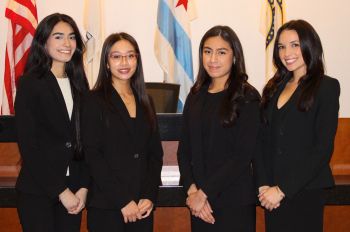Artifacts from Historic Mecca Flats Discovered on Mies Campus
TRANSCRIPT
Ralph Pugh, University Archivist: We’re looking at the southwestern corner of Crown Hall’s block, which is being excavated to do some improvements with steam piping. And they uncovered the foundations of the previous building which had been here, the famous Mecca apartment building, which had been constructed in 1891, at that point the largest apartment building in the United States—covered pretty much the entire block. And it was placed there in anticipation of the World’s Fair of 1893, down in Hyde Park, for the visitors coming from around the world.
After the fair closed the Mecca became a conventional apartment building. And as the racial composition of the neighborhood changed, by the 19-teens it became a center for many of the jazz musicians who were performing on State Street between 31st and 35th, the famous Stroll.
As time went on and Illinois Tech expanded, they purchased this building in 1939 and had plans to tear it down. It took some time to do it, but it was finally razed in the winter of 1951–1952 and replaced by Crown Hall.
What we’re looking at here is the basement level of the Mecca Flats. And the thing which is amazing us at this point with this excavation is that it’s relatively undisturbed, at least to the side where Crown Hall now sits.
This is one of the great stories of the South Side. The Mecca is just very important. Gwendolyn Brooks, the poet laureate of Illinois, actually worked in the Mecca Flats in the 1940s and did social work with a number of people who were at the Mecca Flats. We still have cultural historians talking about the jazz and blues that was performed in the Mecca Flats or near the Mecca Flats. For the African-American community it’s one of the important buildings of early Bronzeville. So even though it’s gone it’s never left anyone’s memory.





